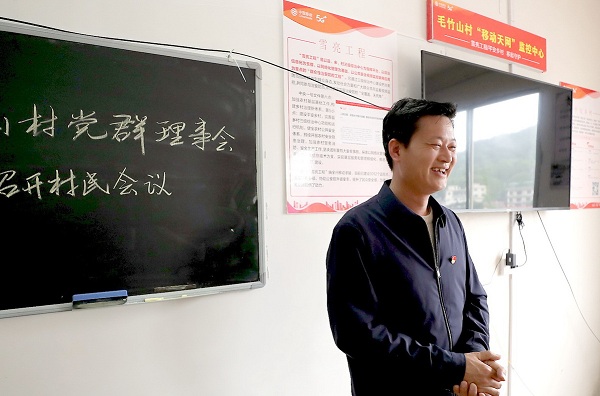Growing grapes pays off for villagers

Wang Junrong, Party chief of Maozhushan village in Guilin, Guangxi Zhuang autonomous region, hosts a conference to discuss village affairs. [Photo by Zhang Wei/China Daily]
Wang Deli was busy checking the growth of his grapes and pruning the vines in a plastic shed in Maozhushan village, Guilin, Guangxi Zhuang autonomous region.
Last year, his 8,000 square meters of vines earned him 140,000 yuan ($21,700).
"It is hard to imagine how great life is today," said Wang, whose family used to work hard all year round but only earned 5,000 yuan.
Maozhushan, in Quanzhou county, is home to 156 people. It was once the most impoverished place in the county because of limited transport and a lack of land.
Wang Junrong, Maozhushan's Party secretary, said villagers used to grow rice and corn, which could only return a humble income.
In 2002, the local government launched a trial project to grow grapes, given that the village is located in a basin and boasts a suitable temperature for cultivating them. However, most of the villagers were reluctant to join the program because they were worried about losing money.
"The village committee then encouraged several members of the Communist Party of China to take the lead to grow 3.33 hectares for the trial," Wang Junrong said.
Villagers were surprised to discover the first batch of fruit tasted sweet and sold for 400,000 yuan.
Grape growing soon became the pillar industry to improve the livelihoods of villagers.
The local government sent seedlings to impoverished families for free, and the finance department offered farmers 5,000 yuan interest-free loans so that more families could benefit from the industry.
In 2015, the village set up a grape growing association to further standardize the industry's development.
"We must unite our strength if we want to go far in the grape industry," said Wang Hairong, the association's chairman.
In order to control the quality of the product, farmers need to grow the same type of grape and implement the same management.
"Our grapes are popular in the markets of Guangdong and Hunan provinces and Guangxi," Wang Hairong said.
"This year the wholesale price of grapes is expected to reach 8 yuan a kilogram."
The county agriculture department has sent technical instructors to show farmers how to use pesticides and prevent plant diseases.
Grapes are now grown on 21.3 hectares of land in Maozhushan, and nearly every household has been involved in the business. The village's per capita income exceeded 30,000 yuan last year.

















